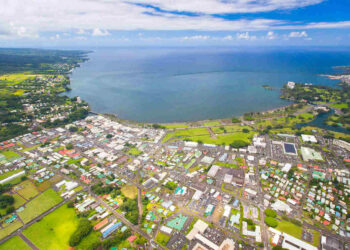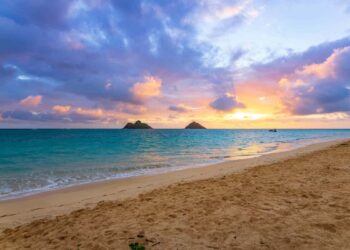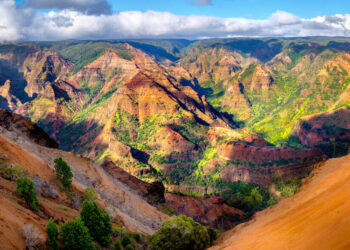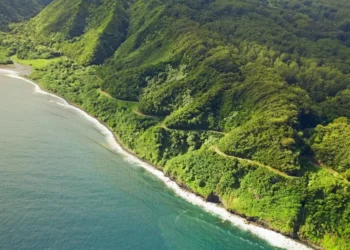Haleakalā National Park crowns the island of Maui, a vast stretch of land where the earth rises sharp and silent to meet the sky. Dominated by the Haleakalā volcano, its summit juts over 10,000 feet above the sea, a sentinel of stone and ash that has watched centuries pass. This isn’t just a park—it’s a place where nature’s raw hand lingers, where the air bites cold at dawn, and where the ground tells of fire and time. For those drawn to landscapes that dwarf human scale, Haleakalā offers a rare encounter, rooted in Maui’s deep past.
Notable Insight: A Volcanic Relic
Haleakalā’s name means “house of the sun” in Hawaiian, tied to a legend where the demigod Maui lassoed the sun to slow its journey and lengthen the day. The crater—technically an erosion-carved basin, not a true volcanic caldera—spans 7.5 miles wide and 2,600 feet deep, a scar from when the volcano last stirred over 500 years ago. Its quiet now belies the power beneath; it’s dormant, not dead.
Places to Visit: An Overview
Haleakalā National Park splits into two main realms: the Summit District and the Kīpahulu District, each with its own pull. The summit’s the star—home to the crater, where trails like Sliding Sands drop you into a moonscape of cinder cones and ash. The Visitor Center at 9,740 feet sits just below, a perch for sunrise watchers, while the Haleakalā Observatory glints nearby, off-limits but striking against the barren slope. Down the mountain, Pu’u Ula’ula Overlook caps the peak at 10,023 feet, a wind-whipped spot with views stretching to the Big Island on clear days.
The Kīpahulu District, 40 miles southeast along the coast, trades rock for green. The ‘Ohe’o Gulch—misnamed “Seven Sacred Pools”—offers waterfalls cascading into pools, a cool contrast to the summit’s starkness. The Pipiwai Trail winds through bamboo thickets to Waimoku Falls, a 400-foot ribbon of water that cuts the jungle. Between them, the park’s 30,000 acres hold rare silversword plants and nēnē geese, Hawaii’s state bird, waddling free.
How to Reach
Haleakalā starts with Maui’s Kahului Airport, 30 miles northwest of the park’s summit entrance. Flights from Honolulu or the mainland—think 5 hours from San Francisco—land here daily. From the airport, renting a car’s the way to go; take Highway 37 south, then 377 and 378 up the switchbacks to the park gate. It’s a 1.5-hour drive, climbing 10,000 feet, gas stations fading behind you—fill up in Pukalani, the last stop. No public buses run this route, and rideshares like Uber stop short of the top; you’re on your own past Kahului.
The Kīpahulu District’s trickier—another 2.5 hours from the summit via the Hana Highway, a winding, 52-mile haul past bridges and cliffs. No direct flights or ferries link here; it’s a road trip or nothing. Inside the park, trails are foot-only—no bikes or cars past the lots. Summit entry’s $30 per vehicle, good for three days, and sunrise slots need a reservation.
Experiencing Haleakalā National Park
The Summit
The crater’s the draw. Sliding Sands Trail stretches 11 miles round-trip, descending 2,800 feet into a field of red and black cinder, cones rising like old watchtowers. It’s a full day’s hike—bring water; there’s none out there. Shorter walks, like the half-mile Pa Ka’oao Trail near the Visitor Center, give a taste without the grind. Sunrise is the ritual—clouds part below, the sky flares gold, and the chill cuts through jackets. The overlook at Pu’u Ula’ula’s a quieter spot; on a good day, you’ll spot Mauna Kea 100 miles off.
Kīpahulu Coast
Down at ‘Ohe’o Gulch, the pools stack up—some deep enough to swim if the water’s safe; check with rangers, flash floods hit hard. Pipiwai Trail’s 4 miles round-trip, a steady climb past bamboo that clacks in the wind to Waimoku Falls, mist rising where it lands. The coastal stretch feels alive—birds call, waves crash below. It’s less crowded than the summit, a slower pace.
Wildlife and Plants
Silverswords dot the crater, spiky and silver, blooming once in decades before they die. Nēnē geese wander the slopes, small and brown, a comeback from near extinction. In Kīpahulu, ‘ōhi’a trees bloom red, and feral pigs rustle the brush—keep your distance.
Frequently Asked Questions About Haleakalā National Park
When’s the best time for sunrise?
Before 7 a.m., year-round—check exact times online. Get there by 5 a.m. for a spot; it’s dark and cold, 30-40°F, so layer up. Clouds can block it; spring’s clearest.
Are the trails tough?
Sliding Sands is steep and dry—moderate if you’re fit, hard if not. Pipiwai’s gentler, muddy after rain. No water stations; pack at least two liters per person.
Can you camp?
Yes, at Hōlua or Palikū in the crater, or Kīpahulu’s campground. Permits are $8, first-come at the Headquarters Visitor Center. No fires; bring a stove.
What’s the weather like?
Summit’s cold and windy, dropping below freezing at night. Kīpahulu’s warm, 70-80°F, but wet—rain’s common. Check forecasts; fog rolls in fast.
Where to Stay
Haleakalā National Park Cabins
Three cabins in the crater—Hōlua, Kapalaoa, Palikū—booked via lottery on recreation.gov, $75 a night. Basic: bunks, no power, pit toilets. Rare openings; plan months ahead.
Kula Lodge
Downslope in Kula, 20 miles from the summit, wooden cabins with fireplaces, $200-$300. Close enough for sunrise, far from the chill.
Hana Maui Resort
Near Kīpahulu, 12 miles off, rooms with ocean views, $250-$400. Quiet, good for the coastal stretch.
Dining Nearby
Kula Bistro
In Kula, 20 miles down, hearty plates—$15 pasta, $10 pastries. No frills, cash preferred.
Hali’imaile General Store
30 miles north, upscale island food—$25 fish, $12 salads. A stop if you’re heading back to Kahului.
Kīpahulu Food Truck
Near the coastal entrance, $10 poke bowls or burgers, parked by the road. Simple, fresh, hit-or-miss hours.
Final Thoughts
Haleakalā National Park isn’t a quick stop—it’s a place that shifts under your feet, from the summit’s stark hush to Kīpahulu’s damp green. The crater’s a relic of fire, the coast a cradle of water, and between them, the land holds its own. You’ll feel the cold at dawn, hear the bamboo creak, see a goose waddle past like it owns the place. It’s not loud or crowded; it’s steady, old, real. Whether you hike the ash or stand by the falls, Haleakalā’s got a piece of Maui’s core, waiting for you to take it in.











